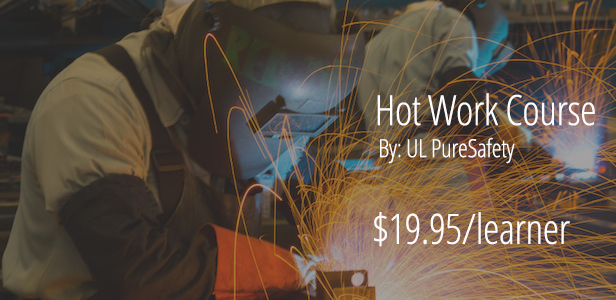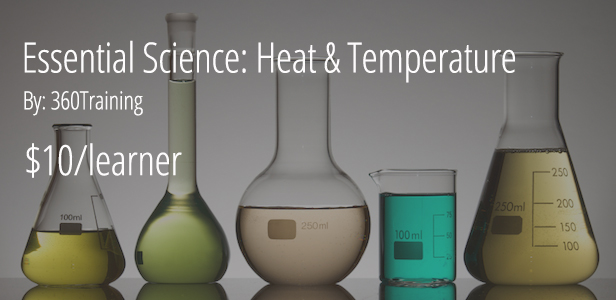Depending on your career, you may have had to deal with “heated” situations. No, we are not talking about an argument between you and your co-worker. Rather, have you ever had a job that required you to perform labor in the sun, work directly with heat or fire, or be hands-on with temperature devices? Occupations requiring work in high temperatures can cause heat exhaustion or dehydration. If one of your co-workers fell ill due to heat-related issues, would you know what to do? Other jobs depend on employees to work with heat and fire on a day-to-day basis. Are you aware of the precautions for “hot work” situations? Or, if you were asked to work with a bunsen burner, could you do it safely? Fortunately, if you answered “no” to any of these questions, OpenSesame has great courses that deal directly with sun and heat protection and practices to help increase your knowledge!
OpenSesame’s featured courses for this week are just some of the many we offer on dealing with heat. When you complete these courses, you will find you have a better grasp on heat-related health problems, heat protection in the workplace, and the essential science measures of heat and temperature. Check them out!

The end of July is just around the corner, and no matter where you live, you have most likely already experienced some intense summer heat. Hot summer days can be fun near the water, but in the workplace it can become a whole different story. In this course by 360 Training, you will learn about the dangers of working in abnormally high temperatures, whether that be indoors or outdoors. The Heat Stress Awareness and Prevention course will walk you through the actions you need to take if someone around you begins to suffer from heat stroke or heat stress, fainting, and dehydration. This one hour course will guide you with audio narration and offers in-course quizzes to teach the necessary precautions to take when working in the sun or strong heat.

Each year, fires and injuries occur when workers are not aware of adequate safety measures needed for conducting hot work. If your job involves doing “hot work,” i.e. cutting, welding, grinding, thawing pipe, hot riveting, torch-applied roofing, powder-driven fasteners, or other work that generates heat or sparks, you have certain responsibilities as an employee to keep accidents from happening. In the PS4-00612 Hot Work course by UL PureSafety, you will be exposed to material on OSHA standards of where hot work is and is not permitted, how to prepare an area for hot work, safety precautions of hot work, hot work permits, and emergency procedures in case of accidents. This helpful course uses 44 minutes of audio narration, games, in-course quizzes, and videos to inform you of necessary steps to take as an employee involved in hot work.

Many of us probably haven’t touched a bunsen burner since high school chemistry or are even aware of how to correctly read a thermometer when we are sick. Even if you do not work in a field that requires working in or with heat, learning the essentials of temperature, temperature scales, and thermometers can be useful for everyday life situations. This Essential Science: Heat and Temperature course will also introduce you to the more scientific side of heat and temperature, showing the correct techniques for using bunsen burners and explaining changes of state from solid to liquid to gas. This 45 minute course is fun and interactive with simulations and “experiments” for you to perform with just the click of your mouse.








